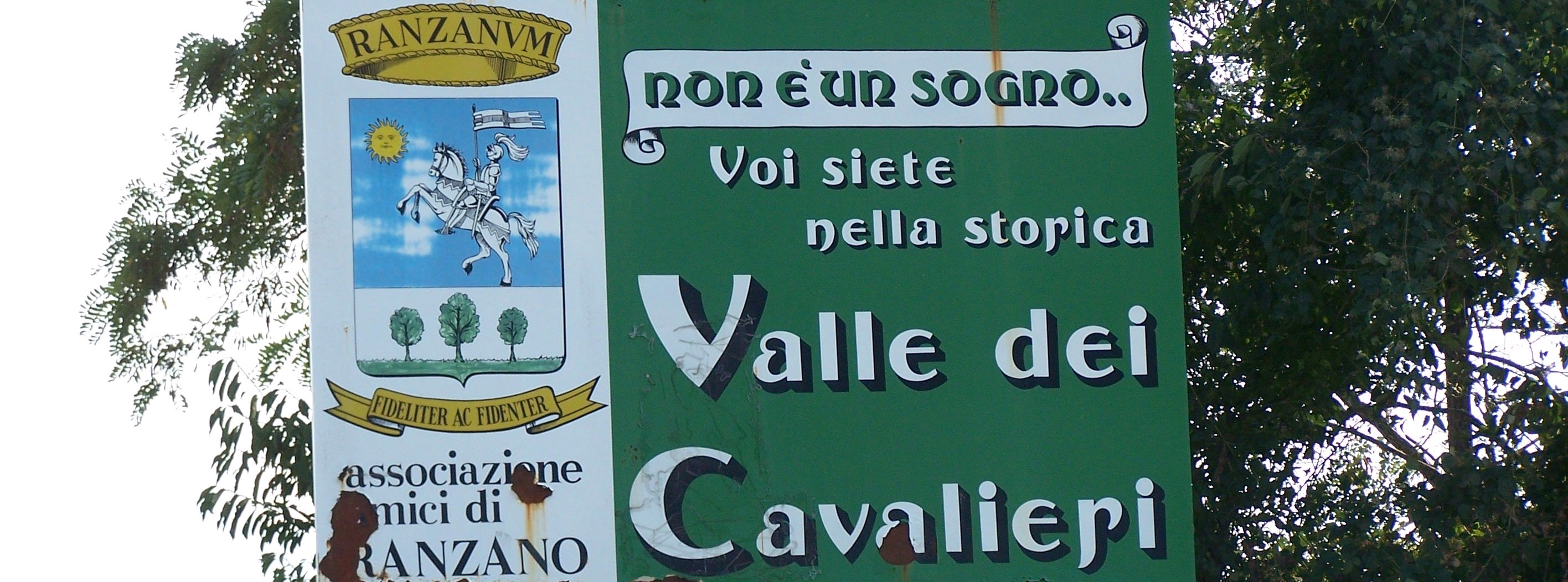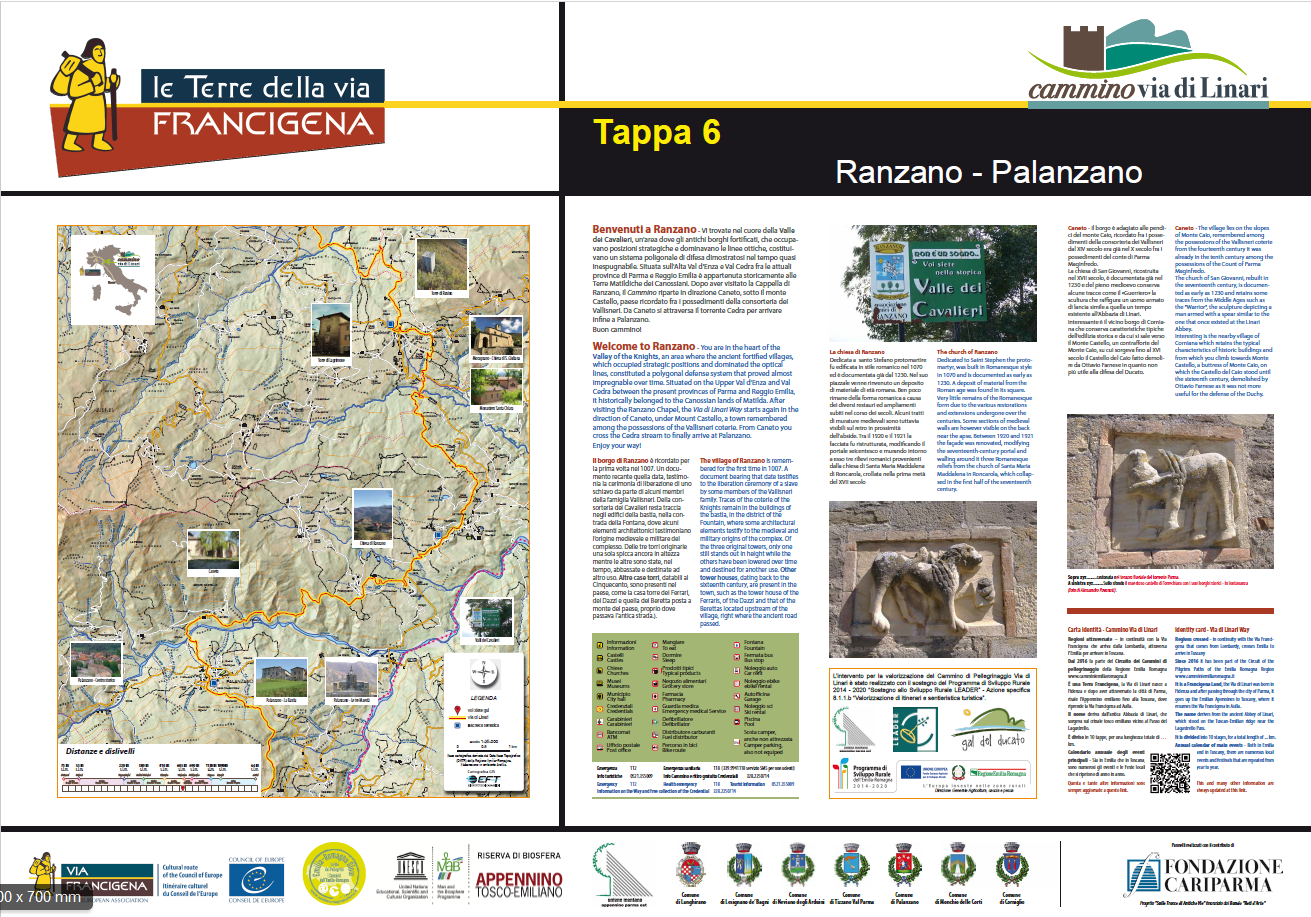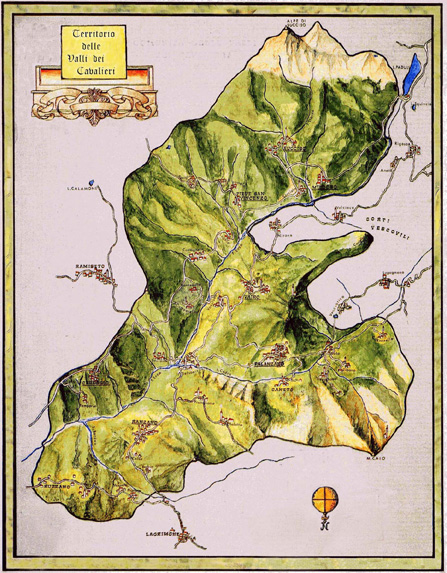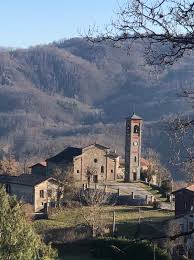

1. COSA VEDERE - Il borgo di Ranzano - La Chiesa di S.Stefano - Il borgo di Caneto
1. WHAT TO SEE - The village of Ranzano - The Church of S. Stefano - The village of Caneto
2. COSA FARE - 2. WHAT TO DO -
3. DOVE DORMIRE - 3. WHERE TO SLEEP
4. DOVE MANGIARE - 4. WHERE TO EAT
PER TORNARE ALLA PAGINA GENERALE DEL CAMMINO VIA DI LINARI, cliccare qui: CAMMINO Via di Linari
TO RETURN TO THE GENERAL PAGE OF THE VIA DI LINARI WAY, click here: Cammino Via di Linari
PER CONTINUARE IL VIAGGIO E SAPERNE DI PIU' SUL PROSSIMO APPUNTAMENTO LUNGO IL CAMMINO, cliccare qui:
TO CONTINUE THE JOURNEY AND FIND OUT MORE ABOUT THE NEXT APPOINTMENT ALONG THE WAY, click here:
***
1. COSA VEDERE
 Benvenuti a Ranzano – vi trovate nel cuore della Valle dei Cavalieri, un'area dove gli antichi borghi fortificati, che occupavano posizioni strategiche e dominavano le linee ottiche, costituivano un sistema poligonale di difesa dimostratosi nel tempo quasi inespugnabile. Situata sull'Alta Val d'Enza e Val Cedra fra le attuali province di Parma e Reggio Emilia è appartenuta storicamente alle Terre Matildiche dei Canossiani. Dopo aver visitato la Cappella di Ranzano, il Cammino riparte in direzione Caneto, sotto il monte Castello. Da Caneto si attraversa il torrente Cedra per arrivare infine a Palanzano. Buon Cammino !
Benvenuti a Ranzano – vi trovate nel cuore della Valle dei Cavalieri, un'area dove gli antichi borghi fortificati, che occupavano posizioni strategiche e dominavano le linee ottiche, costituivano un sistema poligonale di difesa dimostratosi nel tempo quasi inespugnabile. Situata sull'Alta Val d'Enza e Val Cedra fra le attuali province di Parma e Reggio Emilia è appartenuta storicamente alle Terre Matildiche dei Canossiani. Dopo aver visitato la Cappella di Ranzano, il Cammino riparte in direzione Caneto, sotto il monte Castello. Da Caneto si attraversa il torrente Cedra per arrivare infine a Palanzano. Buon Cammino !
Welcome to Ranzano - you are in the heart of the Valley of the Knights, an area where the ancient fortified villages, which occupied strategic positions and dominated the optical lines, constituted a polygonal defense system that proved almost impregnable over time. Located in the Upper Val d'Enza and Val Cedra between the present provinces of Parma and Reggio Emilia, it historically belonged to the Canossian lands. After visiting the Ranzano Chapel, the Way starts again in the direction of Caneto, under Mount Castello. From Caneto you cross the Cedra stream to finally arrive at Palanzano.

Il borgo di Ranzano è ricordato per la prima volta nel 1007. Un documento recante quella data, testimonia la cerimonia di liberazione di uno schiavo da parte di alcuni membri della famiglia Vallisneri. Della consorteria dei Cavalieri resta traccia negli edifici della bastia, nella contrada della Fontana, dove alcuni elementi architettonici testimoniano l’origine medievale e militare del complesso. Delle tre torri originarie una sola spicca ancora in altezza mentre le altre sono state, nel tempo, abbassate e destinate ad altro uso.
The village of Ranzano is remembered for the first time in 1007. A document bearing that date testifies to the liberation ceremony of a slave by some members of the Vallisneri family. Traces of the coterie of the Knights remain in the buildings of the bastia, in the district of the Fountain, where some architectural elements testify to the medieval and military origins of the complex. Of the three original towers, only one still stands out in height while the others have been lowered over time and destined for another use.
La chiesa di Ranzano, dedicata a santo Stefano protomartire fu edificata in stile romanico nel 1070 ed è documentata già dal 1230. Nel suo piazzale venne rinvenuto un deposito di materiale di età romana. Ben poco rimane della forma romanica a causa dei diversi restauri ed ampliamenti subiti nel corso dei secoli. Alcuni tratti di murature medievali sono tuttavia visibili sul retro in prossimità dell’abside. Tra il 1920 e il 1921 la facciata fu ristrutturata, modificando il portale seicentesco e murando intorno a esso tre rilievi romanici provenienti dalla chiesa di Santa Maria Maddalena di Roncarola, crollata nella prima metà del XVII secolo
 The church of Ranzano, dedicated to Saint Stephen the proto-martyr, was built in Romanesque style in 1070 and is documented as early as 1230. A deposit of material from the Roman age was found in its square. Very little remains of the Romanesque form due to the various restorations and extensions undergone over the centuries. Some sections of medieval walls are however visible on the back near the apse. Between 1920 and 1921 the façade was renovated, modifying the seventeenth-century portal and walling around it three Romanesque reliefs from the church of Santa Maria Maddalena in Roncarola, which collapsed in the first half of the seventeenth century
The church of Ranzano, dedicated to Saint Stephen the proto-martyr, was built in Romanesque style in 1070 and is documented as early as 1230. A deposit of material from the Roman age was found in its square. Very little remains of the Romanesque form due to the various restorations and extensions undergone over the centuries. Some sections of medieval walls are however visible on the back near the apse. Between 1920 and 1921 the façade was renovated, modifying the seventeenth-century portal and walling around it three Romanesque reliefs from the church of Santa Maria Maddalena in Roncarola, which collapsed in the first half of the seventeenth century
 Caneto: Il borgo è adagiato alle pendici del monte Caio, ricordato fra i possedimenti della consorteria dei Vallisneri dal XIV secolo era già nel X secolo fra i possedimenti del conte di Parma Maginfredo.
Caneto: Il borgo è adagiato alle pendici del monte Caio, ricordato fra i possedimenti della consorteria dei Vallisneri dal XIV secolo era già nel X secolo fra i possedimenti del conte di Parma Maginfredo.
La chiesa di San Giovanni, ricostruita nel XVII secolo, è documentata già nel 1230 e del pieno medioevo conserva alcune tracce come il «Guerriero» la scultura che raffigura un uomo armato di lancia simile a quella un tempo esistente all’Abbazia di Linari.
Caneto: The village lies on the slopes of Monte Caio, remembered among the possessions of the Vallisneri coterie from the fourteenth century it was already in the tenth century among the possessions of the Count of Parma Maginfredo.
The church of San Giovanni, rebuilt in the seventeenth century, is documented as early as 1230 and retains some traces from the Middle Ages such as the "Warrior", the sculpture depicting a man armed with a spear similar to the one that once existed at the Linari Abbey.
3. DOVE DORMIRE - 3. WHERE TO SLEEP
4. DOVE MANGIARE - 4. WHERE TO EAT


